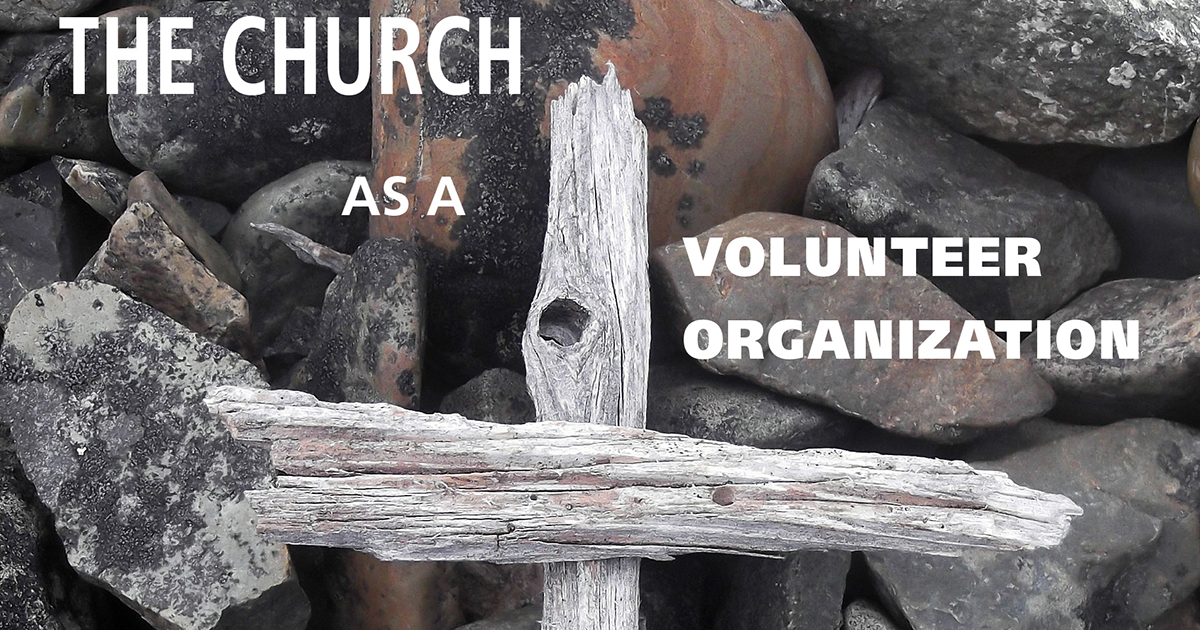First published in 2016, The Church as a Volunteer Organization: Common Sense Approaches to Creating Structure is a small book that has had a big effect on at least one influential reader.
The book was written by Mary L. (Bunny) Stewart, a life-promised oblate of the Sisterhood of St. John the Divine and a former consultant in volunteer services and pastoral services for the Ontario Hospital Association. An early draft was used by Dr. Walter Deller of Trinity College for his classes on congregational administration, and has since become required reading for the course.
This year, The Church as a Volunteer Organization will see its third printing.
Though the title of the book may suggest a work that is primarily about volunteers, its author is quick to correct that misconception.
Volunteers and organizational structures are “really two sides of the same coin, but I want to make sure that both sides of the coin get recognized,” Stewart said. “You can’t talk about organizational structure without the people who make up that structure, and for the most part, the people who make up that structure are volunteers.
“But I don’t want to risk the book being thought about as ‘the care and feeding of volunteers’. It isn’t. It’s a book about organizational structure in the church and how important that is for the clergy, especially, to understand and know about, as well as laity in leadership positions.”
Among many metaphors and analogies used in the book to describe organizational structures, Stewart at one point compares disconnected or uncoordinated church structures to a jigsaw puzzle.
In order to “solve the puzzle”, she outlines four major steps:
- Identify the pieces already in place;
- Imagine what the picture looks like;
- Determine the missing pieces; and
- Complete the picture.
Stewart is wary of suggesting any “one-size-fits-all” model for effective church structures, due to the fact that individual parishes will face different situations. However, she highlights one approach to organizing as rooting the church’s activities in baptismal vows or in the Marks of Mission. For example, in relation to each baptismal vow outlined in the Book of Alternative Services, such as “Seeking and serving Christ in all persons; loving our neighbours as ourselves”, clergy and laity might ask themselves which committees, groups, activities, or positions currently exist to help carry out that vow.

Another major aspect of enhancing community that Stewart highlights is communication. Through discussion and study groups, regular newsletters, social events and projects, and websites, members of parishes and congregations can find opportunities to share their own views on church life and how their involvements contribute to spiritual journeys.
The challenges of volunteer administration and management are a broad area of study—one that Stewart believes does not receive sufficient attention in seminary training.
“The phrase I’ve come to use is it seems like clergy are being trained far more for Sunday mornings than they are for handling the rest of the week,” she said.
“My concern is for the clergy […] [W]ith so many demands [now] being made on churches, and especially on clergy, to do this and cover that and fill in this gap, it’s like sending them out to the wolves ill-prepared. […] If churches are wondering how they should be structured especially in this day and age, where I think churches are trying or being asked to do far more than what they are resourced to do, I think that they have to focus more on what it is they really can do without burning themselves out, especially the clergy.”
In his foreword to The Church as a Volunteer Organization, Deller describes the book as an engaging work rooted in long personal experience that invites readers to “think beyond the box of [their] assumptions”, while offering practical tools for supporting the life of church communities with volunteers.
After his own students at Trinity College had read the book, Deller writes, “They told me they wished they had had a simple straightforward handbook like this in congregations where they had held leadership positions, in non-profit organizations they had been part of, and in their own previous professional work. This book will continue to enrich the thinking of future generations of students and clergy.”
Copies of The Church as a Volunteer Organization cost $12. To order the book, contact:
The Hutch Publishing
1093 Kingston Road #803
Toronto, Ontario M1N 4E2
416-694-9319
Interested in keeping up-to-date on news, opinion, events and resources from the Anglican Church of Canada? Sign up for our email alerts .

